I think Web3 is a paradigm shift in gaming. While I'm not the only one who thinks this, there aren't many of us who have also spent over 30 years professionally making games!
Why are experienced game developers so skeptical? Part of the reason is that the benefits are less obvious and, to be honest, often overhyped and difficult to implement. The world of blockchain is evolving at an incredible pace, and few are good at explaining what it actually brings to game design.
So why do I think this is a huge shift from something like 3D, online multiplayer, or free-to-play mobile games? Here are some ideas that caught my attention early...
Interoperability
A fundamental difference between Web2 and Web3 games is that in Web3 games, the ownership of game assets is recorded on the blockchain rather than in a closed centralized database controlled by the game manufacturer, which allows players to buy and sell Assets, it also allows other games to see what game assets a player owns.
Interoperability is the idea of using assets from one gamein another game. The second game doesn't have to be made by the same person, or even ask for it from the first person. Realistically, I don't think this means that a gun from game 1 can be used in game 2, but the idea can be used in more creative ways.
Anyone who played Game 1 can now choose how they prefer: play more Game 1 or complete levels in Game 2.
Game 1 is an idle mining game; Game 2 is a tower defense game. Game 2 decided that the way to power the tower was to use iridium from the mining game; Game 1 decided to double the idle rewards by accepting stars earned by completing levels in Game 2. Anyone playing Game 1 can now choose how they prefer, by playing more Game 1 or completing levels in Game 2, with both games playing out until one of them decides to cut the power. It creates a richer gamebecause there are now multiple game loops and multiple options for players to choose from. This example describes a pair of games, but there's no reason why 20 games can't interoperate with each other.
In addition to being an interesting idea for game mechanics, it is also a great user acquisition tool, allowing players who have invested in a game to Use this investment in another game.
Our game The Crypt uses interoperability. We treat Loot NFT as a game piece. We're also bringing output from other Loot games into The Crypt. By using a combination of these, players can progress through the game. The NFTs we win in the game can in turn be used in other people’s games.
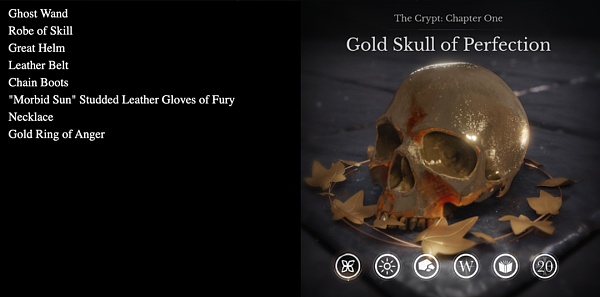
The original Loot NFT (left), available for use in The Crypt, and one of our NFTs (right), winable by playing the game
Composability
Most blockchains Games only keep their game assets on-chain. This is a great use case, but misses some of the opportunities provided by building game logic on-chain. By putting game logic on-chain, others are free to build on top of the game without permission.
The obvious first step is bots. Since the game logic is on-chain, the code can freely interact with the game logic without using the game interface. Robots get a bad rap, but it's possible to design a game that expects them to appear. In our first game we already had a battle between humans and robots, which was fun for the participants.
Bots get a bad rap, but it's possible to design a game that expects them to appear.
After robots came some more interesting ideas. Anyone can write a dashboard to track the prices of in-game resources, they can build a marketplace for game assets, they can create a DAO to pool a guild’s resources and use them optimally. They could decide to ditch the game maker's game client and build a mobile version, which (rights permitting) they can freely sell on the app stores. Justin Glibert calls this "customer agnosticism".
Beyond this is unknown territory. If the game rules are stored on the chain, then other game makers can build their own games on top, just like "DOTA" is built on "Warcraft 3" while adhering to the underlying game rules. Through a tokenized economy, treasury controlled by DAOs and smart contracts, these new games can be incentivized through grants and token-split business models.
The best example of composability in a game is Dark Forest, which has seen a lot of emerging gameplay by encouraging builders to build on top of it .
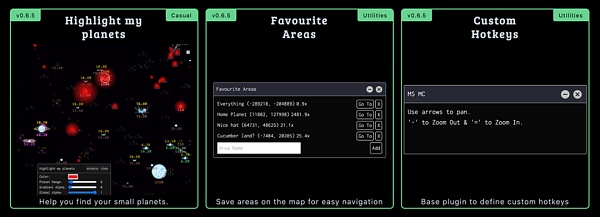
Selected "Dark Forest" plugins from plugins.zkga.me
No permission required
One of my favorite games is StarCraft II. If I wanted to make a game in the StarCraft universe, I had to know who to call at Blizzard, be reputable enough for them to answer the phone, sign an NDA, attend meetings with phone numbers in unfriendly time zones, Then if all goes well, hire a team of lawyers to draw up a business agreement. After that, I need to spend time making sure we are adhering to the art bible and aligning with the norm. If the game is directly related to StarCraft 2, then I will have an ongoing conversation among CTOs about the nature of the API specification and encourage them not to change it.
No one needs to ask anyone for permission.
Web3 breaks all that because NFTs and smart contracts can be used without permission. No one needs to ask anyone for permission. This affects game design by allowing developers to create an organic cinematic universe around the game, especially if the original work is licensed under CC0 (i.e. Creative Commons Zero), which is becoming the de facto choice for Web3 projects. It feels like tight control in Web2 is making way for community-influenced projects in Web3.
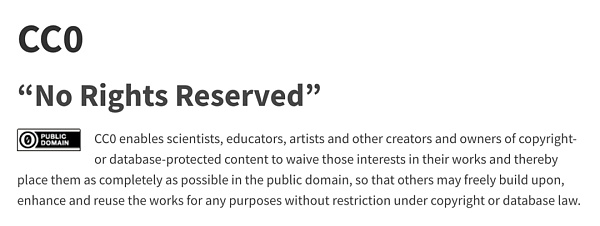
Zero Knowledge Commons (CC0) Encourage others to build on your work
Motivate players
In 2007, Youtube launched their partner program, which splits advertising revenue 50/50 between Youtube and popular content creators. The result is that content creators go to great lengths to try to create videos that will appeal to those crowd-pleasers. It creates a perfect symbiotic relationship between consumers, content creators, and Youtube itself. It turns out that financial incentives gave Youtube a boost that left Vimeo and others in the dust. I've seen the same thing happen in games.
I would certainly rather give money to players than spend it on performance marketing.
Having tokens flow through the vault and then to players based on set criteria gives game designers the opportunity to incentivize what they want to see Behavior. This could be players creating content for other players, entertaining them, managing them, doing chores, community work, or anything the game makers think might be of value. I hope this idea can be extended to marketing, giving players motivation to do things that attract more players to participate, and I would certainly rather give players money than spend it on performance marketing.
Governance as a metagame
When revenue comes from Web3 games, it usually doesn’t get into it Instead of going into the game maker’s bank account, it goes into the game’s coffers. There, some tokens are allocated to game makers, some to players, some to the community, some to liquidity pool providers, etc. The distribution of these tokens is usually (partly) organized by those who hold the game's governance tokens.
Web3 Game Vault is not just a boring management feature, I think it should be considered part of the game. Some "players" may hold tokens because they can act as "simulators" and work with the development team to help manage the game's long-term sustainability and decide which community projects get funded, although perhaps they never play. Live the real game.
Asymmetric Gameplay
When I play Elden Ring, I play A series of set pieces where I experienced a player's journey carefully curated by the game's makers. When I play Zelda, I'm free to veer off course, but ultimately I need to make my way through a dungeon to get to Ganondorf.
Game designers who lean this way have the opportunity to build games that cater to a wider range of player types.
Web3 games provide players with many different ways to play. Some players’ gaming experiences will be honed, upgraded, and sold to players who don’t want to put in the time. Some people will never touch the game and instead invest in the game’s tokens like company stock. Some people will become associate developers, organize the DAO and make decisions on behalf of the vault. Some people look for arbitrage opportunities within the game. Some people will pay big bucks to collect NFTs and become leaders of in-game guilds.
I recognize that many existing games attempt to provide different roles for different players, but Web3 by default promotes role asymmetry both inside and outside the game. Game designers who lean this way have the opportunity to build games that cater to a wider range of player types.
Persistence
Smart contracts exist on the blockchain, and the blockchain can be Immutable or upgradeable. When a game exists on-chain as an immutable smart contract, the game logic is forever immutable, and the ongoing computation and storage costs are paid for in the form of gas fees by those who want to use it. Decentralization provides durability beyond the whims of the creator when the keys to the upgraded contract are destroyed. The game becomes permanent.
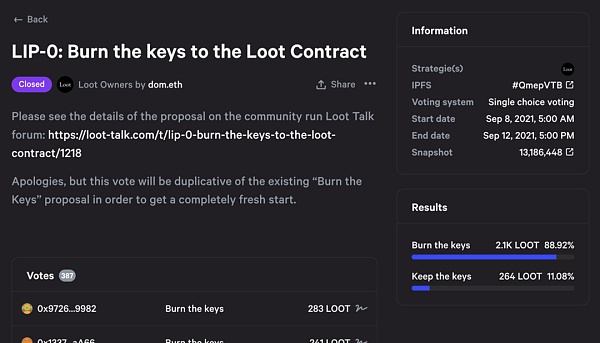
Loot DAO Snapshot votes to destroy the key of the original Loot contract
This It didn't create a new game mechanic per se, but it changed the incentives for game makerswho had the confidence to build around core parts of game logic and the certainty that game logic would never change or disappear.
Play and earn (own?)
I put this question at the end of the list, Because it may cause as many problems as it solves. That said, the ability for players to earn money has introduced a new group of gamers for whom playing games to earn pocket money is a unique way to play. I wouldn’t underestimate the sense of community created by players exchanging tips on how to make money, perhaps unlike the engaged audience you might find in a coupon trading forum.
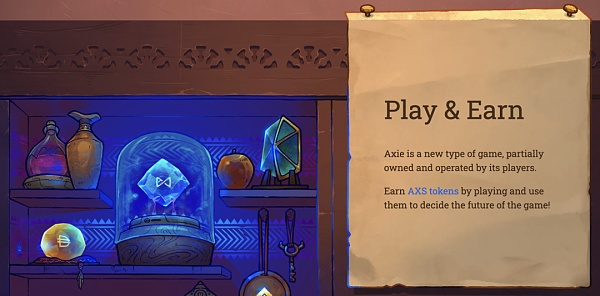
Axie Infinity describes itself as a "play and earn" game
I once asked Axie players whether they played for fun or to make money, but I began to think that this question was full of Western first-world prejudice. I suspect that a large portion of the audience who make money while playing are having a great time, whether we consider "gameplay" or not.
Unknown
I have been working in the blockchain game field for about a year. Most of the game design ideas provided by Chain have become prominent in the past six months.
Ten years ago, when I was transitioning from console development to free-to-play mobile games, I mistakenly thought I should be migrating PlayStation games to mobile devices, but looking back There's far less shared DNA between consoles and mobile devices than I first thought. To date, most blockchain games have been created by adapting Web2 games, resulting in Web2.5 games. The game that defines the Web3 genre has yet to be built.
Original link: https://playmint.com/game-design-ideas-from-web3
 Cheng Yuan
Cheng Yuan









